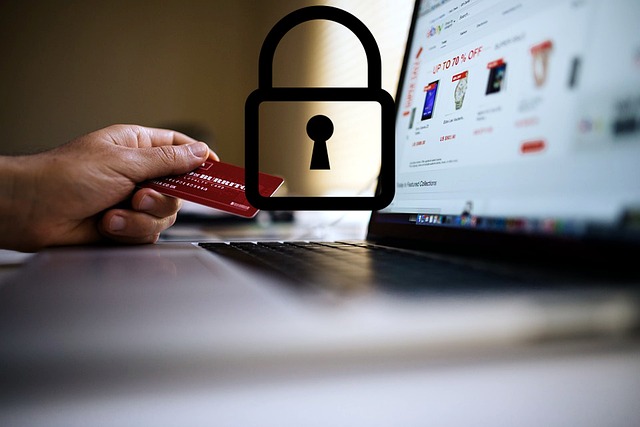The Importance of a Strong Brand Logo in Marketing
In today’s hyper-competitive market, businesses must carve out a unique identity. One of the most significant aspects of this identity is a strong brand logo. A brand logo serves as the face of a company. It embodies its ethos and communicates its values at a glance. This simple yet incredibly effective graphical representation plays a vital role in marketing. Many businesses underestimate the power of a well-designed logo, thinking it’s just a small piece of branding. However, a brand logo is far more than a graphic; it’s a powerful tool for connection and recognition.
Firstly, let’s talk about recognition. When consumers see a brand logo, they immediately form a perception based on their previous experiences. If your logo is recognizable, it engages consumers and brings them to remember your brand among countless competitors. A well-crafted logo sticks in the minds of potential customers. Studies have shown that visual cues can trigger recognition within seconds. Think about iconic logos like Apple or Nike. They immediately evoke feelings, associations, and loyalty. The right brand logo can establish a cognitive shortcut in your audience’s mind, making it easier for them to identify and trust your brand in the crowded marketplace.
Moreover, a strong brand logo communicates professionalism. Imagine encountering a business with a poorly designed logo—it may raise doubts about the quality of their products or services. On the other hand, an attractive, well-thought-out logo suggests that a company pays attention to detail and values its image. Psychological studies indicate that visual appeal significantly affects purchasing decisions. When customers perceive a brand as professional and well-structured, they’re more likely to engage positively. Thus, investing in a quality logo is not just an expense; it’s a strategic approach to foster consumer trust and enhance brand reputation.
Furthermore, let’s look at emotional connection. A logo goes beyond mere aesthetics; it signifies the company’s mission and vision. Colors, shapes, and fonts each evoke different emotions. For instance, a green logo can symbolize eco-friendliness, while blue might convey professionalism and trust. When people connect emotionally with your logo, they also develop a connection with your brand. This emotional resonance translates into loyalty. According to recent research, brands that evoke emotional connections enjoy a higher customer retention rate. If your logo embodies your brand’s values and mission, it fosters a sense of belonging among customers, turning casual buyers into loyal advocates.
Additionally, consider this – consistency is key in marketing. A unified brand identity, reinforced through a solid logo, creates a cohesive image across all platforms. From websites to social media and packaging, the consistency in visual branding creates a strong association in the minds of consumers. It allows businesses to present a unified message that builds trust over time. If your brand is scattered and inconsistent, consumers may lose faith in your reliability. Regular exposure to your logo across various touchpoints reinforces brand recognition, boosts credibility, and amplifies consumer confidence.
Another vital aspect is versatility. A strong brand logo enhances marketing strategies by adapting to different formats and mediums. Whether it’s digital adverts, print media, or promotional merchandise, a well-designed logo should maintain its integrity at various sizes and surfaces. For example, logos flexible enough to work in monochrome are also highly effective. This adaptability is essential in ensuring consistent brand representation everywhere your business appears. A versatile logo allows marketers to get creative while ensuring the essence of the brand remains intact.
In addition, a powerful logo engages social sharing. With social media being a massive part of marketing today, a compelling logo can boost shares, likes, and comments. A logo that stands out captures attention, encourages organic sharing, and broadens your reach. Think about it: consumers want to be associated with brands they feel passionate about; a visually appealing logo can act as an endorsement. Logos that resonate tend to encourage user-generated content, as fans showcase brands they love, effectively becoming brand ambassadors. This kind of promotion is invaluable as it taps into existing networks, creating a multiplier effect for marketing.
Now, let’s not forget the evolution of brand logos. Sometimes, businesses need a refresh to align with contemporary trends. Rebranding can rejuvenate a company’s image and appeal to a new demographic. Sure, this doesn’t mean losing your identity; effective rebranding preserves core values while updating visuals to stay relevant. A logo redesign has the potential to invigorate a brand, attracting fresh interest while retaining loyal customers. However, any change must be approached carefully. Customers recognize familiarity, and drastic alterations can lead to confusion. Thus, a gradual evolution often works best, allowing audiences to adapt while preserving essential elements that represent the brand’s heritage.
Moreover, audience identification is crucial in the landscape of marketing. Your logo should appeal directly to your target demographic. Age, interests, and lifestyle preferences play a critical role in how people perceive branding. A well-designed logo reflects the targeted market’s tastes and values—this relevance enhances the likelihood of capturing potential customers’ attention. Marketers often invest significant time researching audience preferences before settling on a logo design. This commitment not only enhances your brand’s appeal but serves to deepen connections with the audience by embodying aspects they value.
Furthermore, the future of branding is dynamic, where digital presence is paramount. In the age of online shopping, a logo is often the first thing customers see. Whether on websites or social media platforms, your logo creates the first impression. In e-commerce, where visual elements significantly impact buying choices, a coherent logo becomes even more critical. A good digital strategy incorporates your logo into every piece of online communication, from emails to promotional campaigns. The consistency across digital platforms ensures consumers recognize your brand instantly, increasing the chances of engagement and conversions.
The importance of protecting your brand logo cannot be overstated. Once a logo gains recognition, it can become a valuable asset. Companies must consider trademarking their logos to guard against infringement. Legal challenges can pose significant threats if a business doesn’t protect its identity. By securing intellectual property, companies safeguard their brand reputation and maintain consumer trust. A strong legal foundation adds an extra layer of credibility to your business, further enhancing how customers perceive your brand. Investing in legal protection shields the company from potential threats, preserving the years of effort poured into building its visual identity.
Conclusion
Ultimately, a strong brand logo serves as a cornerstone of effective marketing. It establishes recognition, conveys professionalism, fosters emotional connection, and ensures consistency. From versatile designs to enhanced social sharing opportunities, the benefits of investing in a quality logo extend far beyond its initial visual appeal. Understanding the profound role of a brand logo can empower businesses to craft a compelling identity that resonates with consumers and drives success in a competitive world. Whether your company is a startup or an established enterprise, prioritizing logo design can profoundly impact your market presence and brand loyalty.
FAQ
- 1. What makes a logo strong?
- A strong logo is simple, memorable, versatile, and relevant to the brand’s identity. It should resonate emotionally with the target audience and maintain consistency across different platforms.
- 2. How often should a company redesign its logo?
- Companies should consider redesigning their logo when it no longer reflects the brand’s values, market trends change significantly, or if it fails to connect with the target audience. However, any refresh should retain recognizable elements to avoid confusion.
- 3. Can a logo impact customer loyalty?
- Yes, a logo can significantly impact customer loyalty. A well-designed logo fosters recognition and emotional connection, strengthening consumer trust and encouraging long-term engagement with the brand.
- 4. Is it worth investing in a professional logo design?
- Absolutely! Investing in a professional logo design pays off in establishing a strong brand identity, fostering recognition, and enhancing credibility, which ultimately leads to increased sales and customer loyalty.
- 5. How can I ensure my logo is unique?
- To ensure uniqueness, researchexisting logos in your industry, brainstorm original concepts, and consider consulting a professional designer. Trademarking your logo can also help protect your identity from potential disputes.



